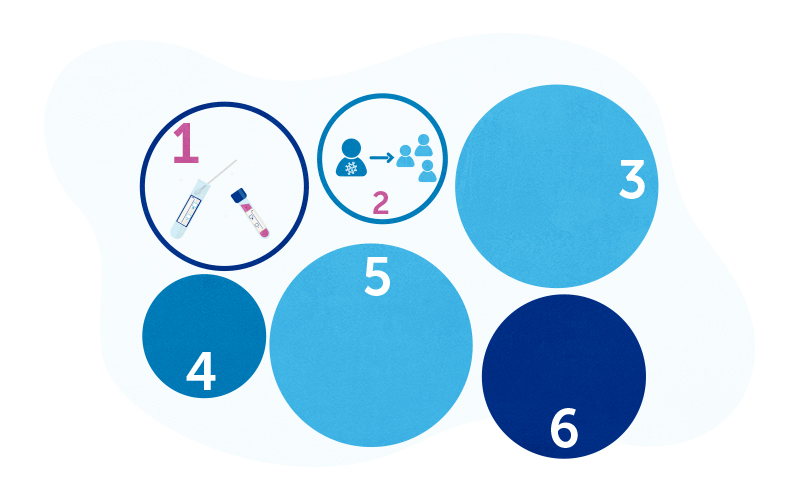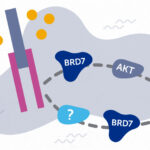2020, the year COVID-19 tuned us into science: Part 1

On January 9, the World Health Organization announced a mysterious pneumonia in Wuhan, China. Few people knew it was the threat infectious disease experts had feared for decades: a fast-spreading, potentially deadly new virus with no known cure.
As the first images of critically ill patients came out of China and Italy, we watched as scientists scrambled to understand this new coronavirus. We’ve tracked tests, treatments, and vaccines as they’ve progressed. We’ve studied COVID-19 maps and curves, tuned into Dr. Fauci on TV.
In 2020, scientists made history before our eyes, compressing years of work into months. 2020 brought science to everyone’s dinner table. It was a master class in public health, COVID-19 testing, COVID-19 treatments, and more. Here are the first two lessons.
Lesson #1: How COVID-19 spreads and the science of staying safe
The CDC confirmed the first U.S. case of COVID-19 on January 21. The new coronavirus, SARS-CoV-2 ramped up quickly, attacking the most vulnerable: the elderly and people with chronic health conditions like diabetes, heart disease, and kidney disease. As the virus ravaged New York City, we learned that people living in crowded households, the homeless, people whose jobs require contact with the public, and some racial and ethnic groups are at especially high risk.
Almost overnight, we changed our habits. We learned that staying home, maintaining a 6-foot or more distance from others, and avoiding indoor gatherings help prevent the virus from spreading, and that coughing, talking, and singing spread it very efficiently. And that wearing a mask protects us, but protects others even more.
We saw people help investigators track the virus by reporting their symptoms on crowdsourcing apps like COVID Near You. We learned that smartphone “location” data could help experts predict the next hotspots. And, that even tests of municipal wastewater could detect the presence of virus in a community.
Lesson #2: COVID-19 tests
As time went on, we became experts on COVID-19 tests — the different kinds, their availability, their reliability, how quickly they return results, and which are most useful in different situations. We’ve come to learn that test results in children can vary depending on whether they have symptoms and how much virus they’re carrying.
Sadly, there’s not yet a unified approach to testing across the country. The “Holy Grail” is a test that is so cheap, easy, and accurate it could be given to everyone to monitor virus levels in a community and clear people for travel, school, and work. We haven’t attained that, but we’re seeing encouraging steps in that direction. There are two types of diagnostic tests available at this time: molecular tests via RT-PCR that detect the virus’ genetic material and rapid antigen tests that detect viral proteins. The newest rapid tests appear to work well in adults with symptoms of COVID-19, but data in children are limited. Innovative rapid testing approaches, like one prototyped at Boston Children’s, might expand our options in the future.
Our next post will delve into what we’ve learned about COVID-19 treatments and the COVID-related multi-system inflammatory syndrome in children (MIS-C).
Learn more about Boston Children’s response to COVID-19 and more about COVID-19 research at Boston Children’s.
Related Posts :
-

Building better antibodies, curbing autoimmunity: New insights on B cells
When we’re vaccinated or exposed to an infection, our B cells spring into action, churning out antibodies that are ...
-

BRD7 research points to alternative insulin signaling pathway
Bromodomain-containing protein 7 (BRD7) was initially identified as a tumor suppressor, but further research has shown it has a broader role ...
-

Could SIDS be caused by unrecognized brain infections?
Some infants who pass away from sudden infant death syndrome (SIDS) are known to have had acute minor infections. Could ...
-

When diagnosis is just the first step: The Brain Gene Registry
Through advances in genetic sequencing, many children with rare, unidentified neurodevelopmental disorders are finally having their mysteries solved. But are ...





